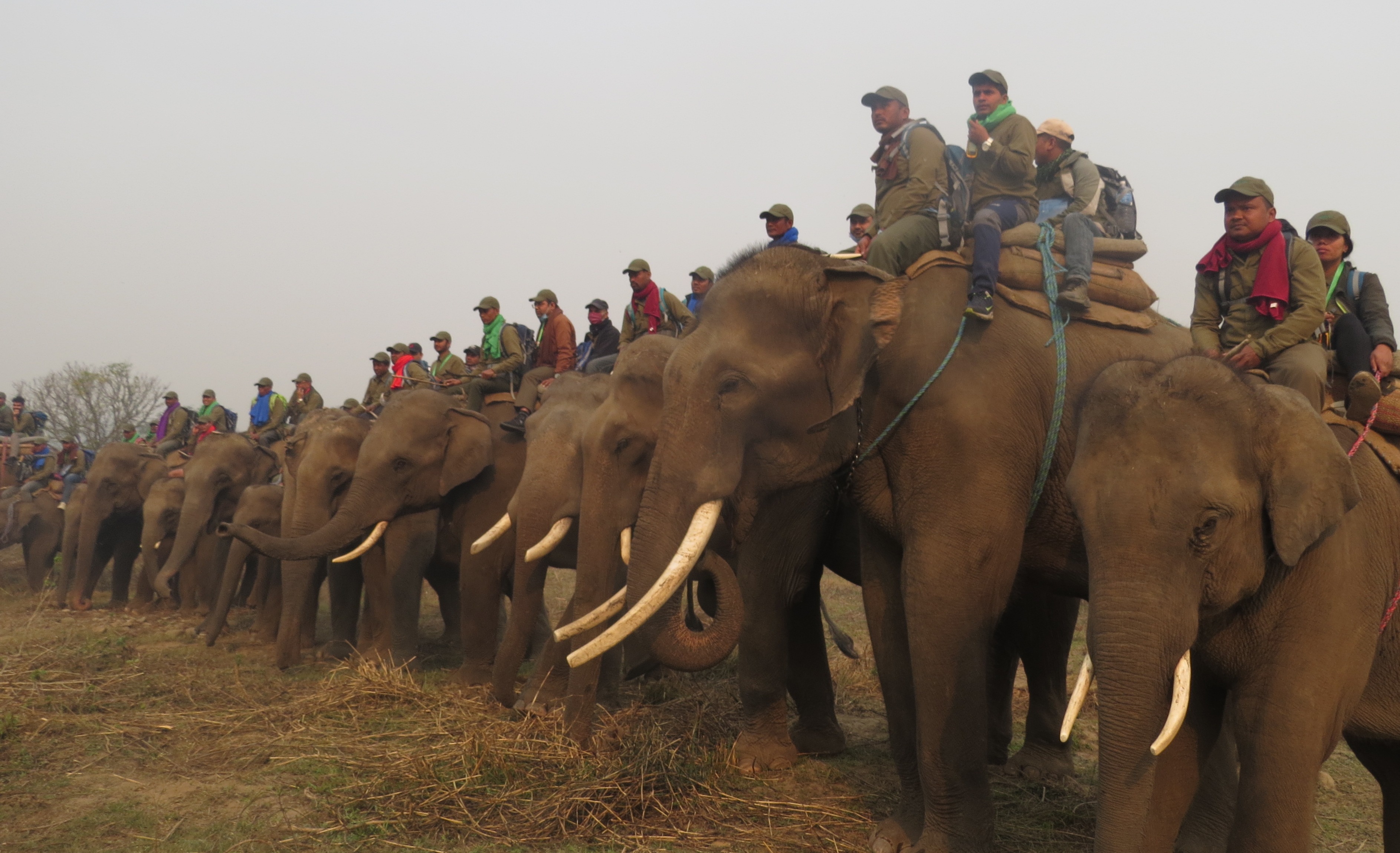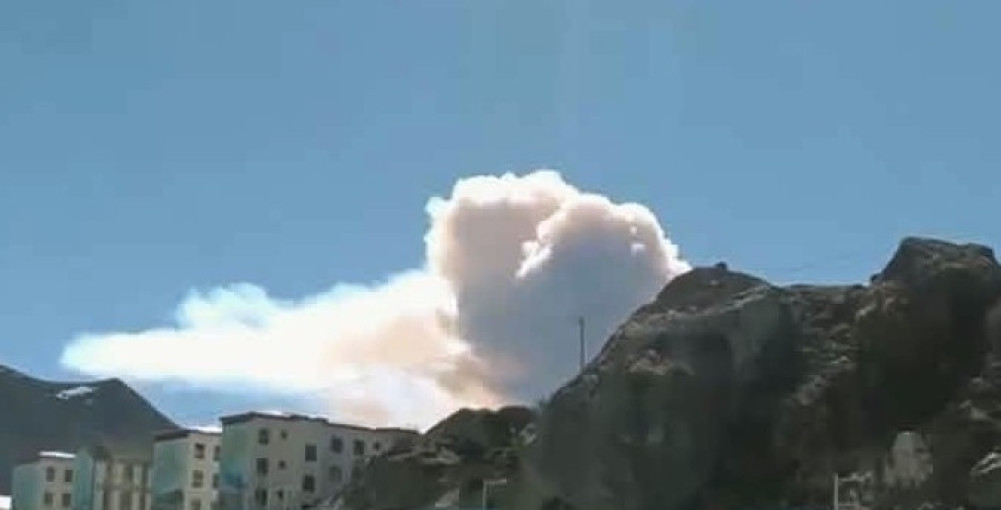National
Nepal starts counting its one-horned rhinos after six years
About 300 people and 60 elephants have been mobilised for the count that began in Chitwan and Parsa. Census results are expected in the third week of April.
Chandan Kumar Mandal
The nationwide census of one-horned rhinos kicked off on Monday.
The rhino census, which is taking place after six years, was inaugurated amid a ceremony organised in Sauraha, Chitwan.
“The rhino count has formally started from Chitwan-Parsa complex,” Hari Bhadra Acharya, spokesperson for the Department of National Park and Wildlife Conservation, told the Post from Chitwan. “Park officials and technicians have already started counting rhinos in the field.”
The census process started from Ramauli Pratappur area of Parsa National Park. In the first phase, rhino count will take place in Chitwan-Parsa Complex, which includes Chitwan National Park and Parsa National Park.
The complex has been divided into 19 blocks to ensure that the same rhino is not counted twice as enumerators move to another block once they finish the count in one block.
Acharya said it would take about three weeks to count the rhinos living in Chitwan National Park and adjoining forests. Chitwan had 605 individual rhinos when the national census was last carried out in 2015.
Rhino census plans were shelved several times in the last two years.

Rhino count in Bardiya is scheduled to begin on March 30 and is expected to be completed within 10-12 days. In Shuklaphanta, the count will start on April 1 and it will take at least a week to count them.
In 2015, the two parks had 29 and eight rhinos respectively.
Before the count started in rhino habitats, enumerators had participated in a two-day training in Sauraha before moving inside the core area of the park on Sunday to start the rhino count.
The enumerators will be camping inside the park until the count is completed.
As per the government estimates, nearly 300 individuals, supported by 60 elephants, will be mobilised for the rhino census in four protected areas in the next few weeks. The government has allocated Rs 8 million budget for the purpose.
To count the rhino population inside protected areas and adjoining forests, park officials, technical experts, representatives of partner organisations and Nepal Army personnel, and elephants have been deployed. Counters mounted on elephants will conduct the headcount of rhinos traversing across the park
“Counters mounted on elephants will conduct the headcount of adult rhinos and their calves,” said Acharya. “They will also keep a record of invasive plants and other useful information which can be crucial for their habitat management in future.”
Invasive plants are one of the biggest threats to plants that the rhinos feed on among other things.
For example, a study found that Mikania micrantha was responsible for 44 percent of the habitat degradation of the one-horned rhino in Chitwan National Park by suppressing the growth of grasses and preventing the regeneration of trees.
Each rhino will be located and counted by trained officials, technicians and wildlife biologists. The team will move parallel to the rhino habitats, counting all the sighted rhinos individually and recording their details in a specified format.
The details include shape, horn sizes, folds present in the neck and rump, unique body markings like cuts, scars, skin lobes and any other special characteristics present on the body of the rhino.
This year’s findings of rhino count will be watched carefully as there has been an unprecedented rise in the number of rhino deaths inside Chitwan National Park.
The government plans to make public the census figures within a week of completing the count.
Acharya estimates said the census findings will be out by the third week of April.








 7.12°C Kathmandu
7.12°C Kathmandu





